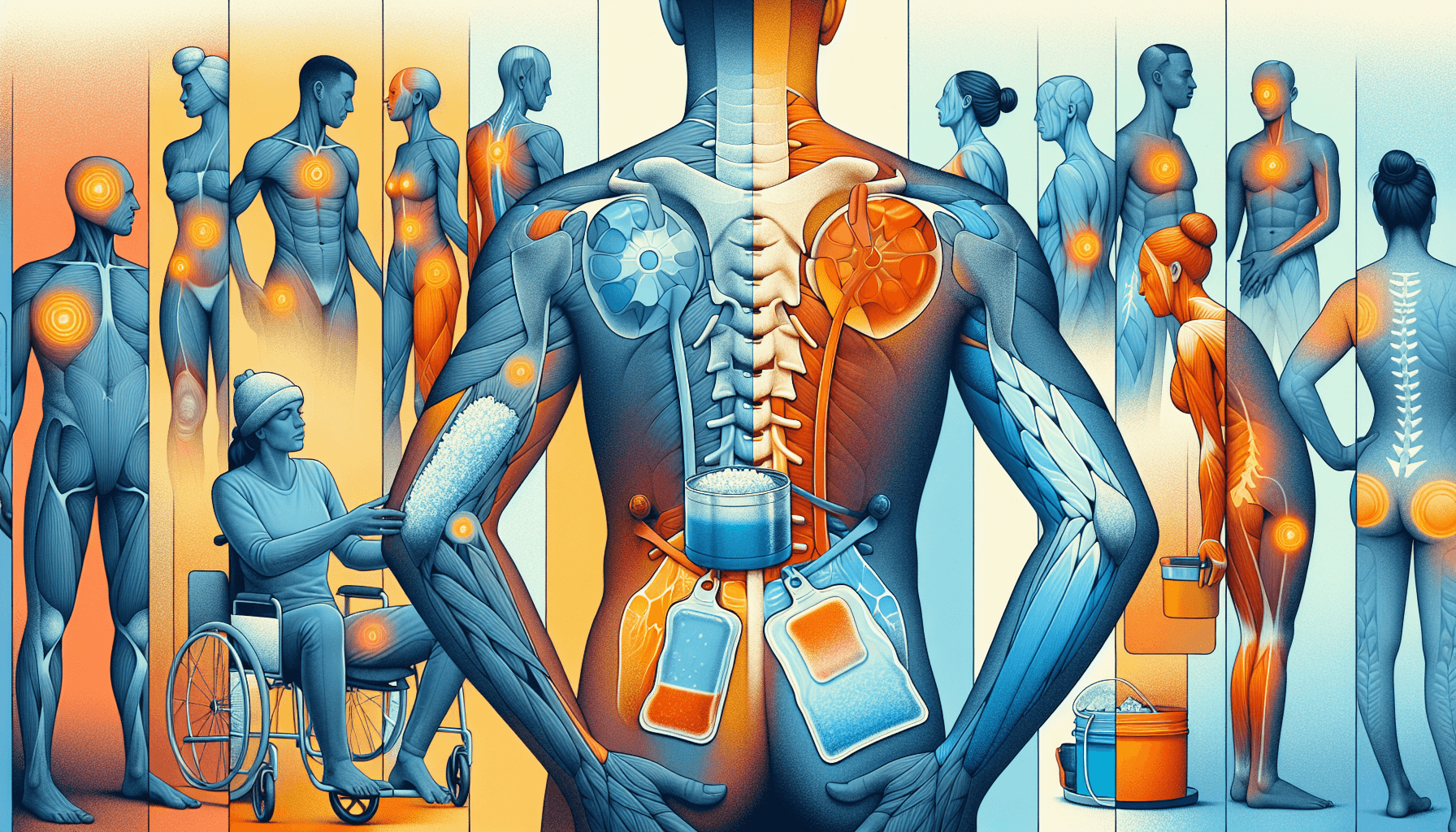Back pain is a common issue that many people face at some point in their lives. Whether it’s due to poor posture, an injury, or conditions such as herniated discs or sciatica, finding relief from back pain is a top priority for those who suffer from it. Heat and cold therapy are two effective methods that can help alleviate back pain and promote healing. In this article, we will explore how to use heat and cold therapy for back pain and discuss their benefits and best practices.
The Benefits of Heat Therapy for Back Pain
Heat therapy, also known as thermotherapy, involves the application of heat to the affected area. It works by increasing blood flow, relaxing muscles, and reducing stiffness, which can help alleviate back pain. Here are some of the benefits of using heat therapy for back pain:
- Pain relief: Heat therapy can provide immediate relief from back pain by increasing blood flow and soothing sore muscles.
- Muscle relaxation: Heat helps relax tense muscles, reducing spasms and promoting flexibility.
- Improved circulation: By increasing blood flow to the affected area, heat therapy promotes healing and nourishment of the tissues.
- Reduced inflammation: Heat can help reduce inflammation associated with back pain, providing further relief.
There are different ways to apply heat therapy to your back. You can use a heating pad, a hot water bottle, or a warm compress. Ensure the heat source is not too hot to avoid burns, and always follow the manufacturer’s instructions.
Using Cold Therapy for Back Pain Relief
Cold therapy, also known as cryotherapy, involves the application of cold to the affected area. It works by numbing the area and reducing inflammation, which can help alleviate back pain. Here are some benefits of using cold therapy for back pain relief:
- Pain reduction: Cold therapy can help numb the area, providing temporary relief from back pain.
- Reduced swelling: Cold therapy helps constrict blood vessels, preventing excessive blood flow and reducing inflammation.
- Decreased nerve activity: Cold therapy can help calm irritated nerves, reducing pain signals sent to the brain.
- Speeding up recovery: Cold therapy can help reduce tissue damage and promote faster healing after an injury.
There are several ways to apply cold therapy to your back. You can use an ice pack, a bag of frozen vegetables, or a cold gel pack. Wrap the cold pack in a thin towel before applying it to your skin to avoid frostbite or burns. Apply cold therapy for about 15-20 minutes at a time, several times a day, or as directed by your healthcare provider.
When to Use Heat Therapy vs. Cold Therapy
Knowing when to use heat therapy versus cold therapy can make a significant difference in your back pain relief. Here are some guidelines to help you decide which therapy to use:
- Heat Therapy:
- Use heat therapy for chronic back pain or stiffness.
- Apply heat therapy before engaging in activities that may aggravate your back pain.
- Do not use heat therapy for acute injuries or inflammation.
- Cold Therapy:
- Use cold therapy for acute injuries or sudden onset of back pain.
- Apply cold therapy after engaging in activities that may strain your back or cause inflammation.
- Do not use cold therapy for chronic back pain or stiffness.
It’s important to note that heat or cold therapy is not suitable for everyone. If you have certain medical conditions, such as diabetes or circulation problems, or if you’re pregnant, consult with your healthcare provider before using these therapies.
Combining Heat and Cold Therapy
In some cases, alternating between heat and cold therapy can provide even better results in relieving back pain. This technique is known as contrast therapy. Here’s how you can combine heat and cold therapy:
- Start with applying heat to the affected area for about 15-20 minutes.
- Follow it up by applying cold therapy for about 10-15 minutes.
- Repeat this cycle 2-3 times, ending with cold therapy.
Alternating between heat and cold can help improve blood flow, reduce inflammation, and provide better pain relief for some individuals. However, if this method exacerbates your pain or discomfort, discontinue its use and consult with a healthcare professional.
Remember, every person’s body is unique, and what works for one person may not work for another. It’s essential to listen to your body and adjust the temperature and duration of therapy as needed.
If you’re experiencing chronic back pain or if your pain persists despite using heat or cold therapy, it’s advisable to consult with a healthcare professional. They can help diagnose the underlying cause of your pain and recommend appropriate treatment options, such as physical therapy, chiropractic care, or other interventions.
If you are looking for professional assistance in treating your back pain, Eastside Ideal Health offers specialized back and hip pain treatments that are tailored to your specific needs. Their comprehensive approach combines the latest techniques to provide effective pain relief and restore your mobility.
In conclusion, heat and cold therapy are valuable tools in managing back pain. By understanding when and how to use heat and cold therapy properly, you can find relief and promote healing for your back pain. Remember to consult with a healthcare professional if your pain persists or worsens, and always prioritize your safety and well-being.

